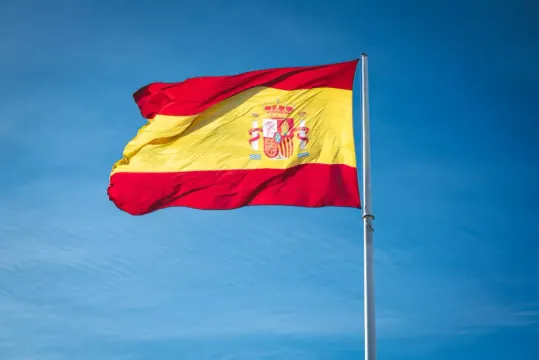Biography of Francisco de Goya

Francisco de Goya, whose full name is Francisco José de Goya y Lucientes, is a well-known Spanish painter of the late 18th century. He was born in 1746 and died in 1828. During his life, he demonstrated an incomparable artistic technique as well as a political commitment at all times. He also witnessed the horrors of his time, which greatly influenced his works. You don't know this painter? I invite you to discover who he was and to study more specifically one of his most famous paintings: El Tres de Mayo (The Third of May).
Youth and artistic beginnings of Goya
Son of José de Goya and Gracia Lucientes, Francisco de Goya was born on March 30, 1746 in Fuendetodos, near Zaragoza, Spain. From an early age, he developed a great interest in art and joined the drawing academy of José Luzán, in Zaragoza, in 1759. Few works are preserved from this period, those that still exist are mostly representations Baroque-style nuns like La triple generacion (“The triple generation”). He left this school four years later and then tried to enter the San Fernando Academy in Madrid to perfect his technique, but he did not succeed. He therefore decided to work with Francisco Bayeu, a recognized painter.
Self-taught, Francisco de Goya perfected his artistic culture by taking an interest in the collections of the Royal Palace in Madrid. He left for Italy in 1770 and received his first prize in Parma for his painting Aníbal vencedor contemplated por primera vez Italia desde los Alpes (“Hannibal conqueror, discovering Italy for the first time from the Alps”). After a year in Italy, he returned to his native region with a certain prestige which enabled him to receive his first orders that same year, at the age of 25.
In his private life, Goya is fulfilled. He married Josefa Bayeu, Francisco Bayeu's sister, in 1773. They had several children together, but only one reached adulthood: Francisco Javier de Goya.
First major commissions from this well-known Spanish painter
In 1774 Goya began to make a name for himself and became a well-known Spanish painter , with the works he delivered being appreciated. Anton Raphael Mengs, a very influential neoclassical painter, even encouraged him to return to Madrid where he could claim larger commissions. Goya therefore returned to the Spanish capital the following year and a few months later received a request to decorate certain rooms in the Escorial and Prado palaces. His work is even noticed by the royal family.
Goya was contacted by Charles III, King of Spain, in the late 1770s and began working directly for the royal family. His new status allowed him to join a circle of Spanish intellectuals inspired by the ideas of the Age of Enlightenment. It was at this time that Goya began to assert his political commitment, which would later be reflected in his works.
The more the years pass, the more the influence of Diego Velázquez is found in the works of Goya. The latter began by making engravings by copying some of the works of his master. He then draws inspiration from his work on several occasions: Goya depicts himself in his painting La familia de Carlos IV (“The Family of Charles IV”) just as Velázquez had done in Las Meninas (“Las Meninas”); he was also the first to paint a nude (La Maja desnuda – “The naked Maja”) since Velázquez in 1650 (La Venus del espejo – “The Venus of the mirror”) and technically they both use quite dramatic light, as in their two representations of the crucified Christ (Velázquez on the left and Goya on the right).
The growing success of this well-known Spanish painter does not, however, only make people happy. From 1780, Francisco Bayeu became jealous of his brother-in-law, which forced the latter to distance himself from the man who had nevertheless allowed him to make a name for himself. From 1783, Goya worked mainly for the Spanish aristocracy: after having served Don Luis, one of the king's brothers, he painted for the Marquis de Peñafiel and even became assistant director of painting at the Academy of San Fernando. , whom he had failed to integrate as a younger student.
Goya in the service of the King of Spain
A few years later, in 1786, Goya had the honor of becoming painter to the King of Spain. He worked for several years on the tapestries adorning several rooms in the Prado Palace. It was from this period that the painter began to engage socially: whereas previously he simply represented the aristocrats who placed orders with him, Goya began to integrate as early as 1790 a personal point of view criticizing society in some of his works. This is the case, for example, in El pelele (“The puppet”): four women, probably ladies of the Court, play “pelele”, a game which consists of bouncing a man on a sheet. In the scene, the man is represented as a disarticulated puppet, in order to counter the real situation of women in Spain who are often dominated and reduced to silence by men.